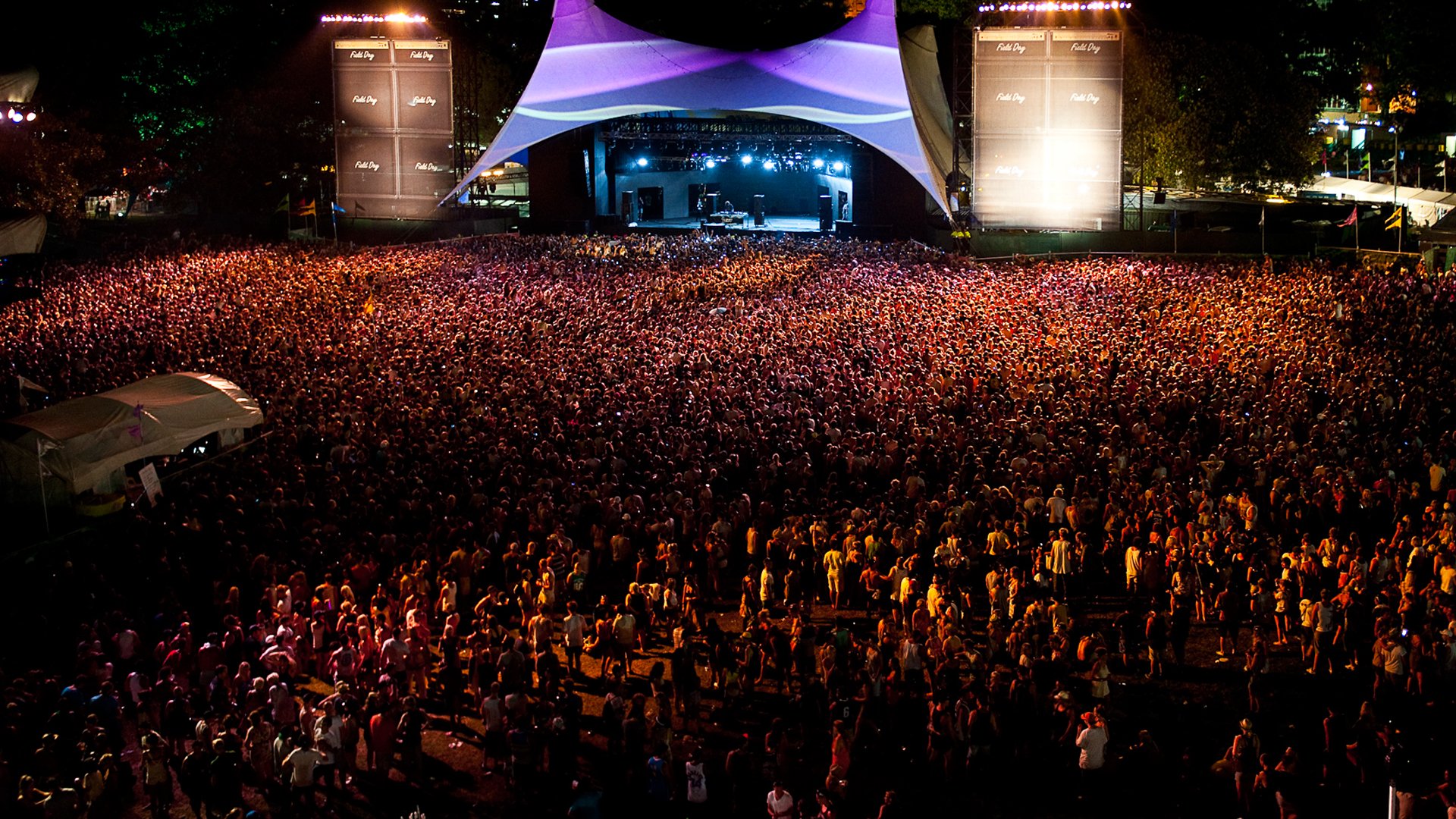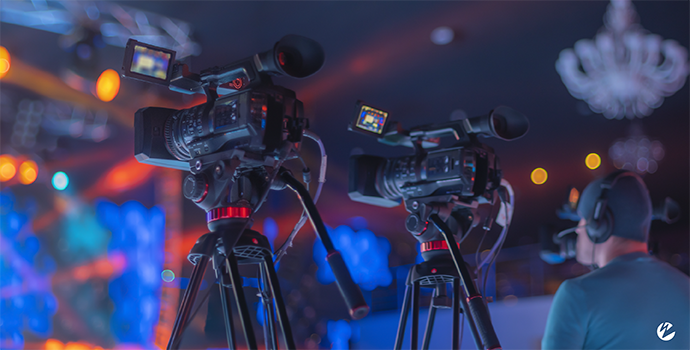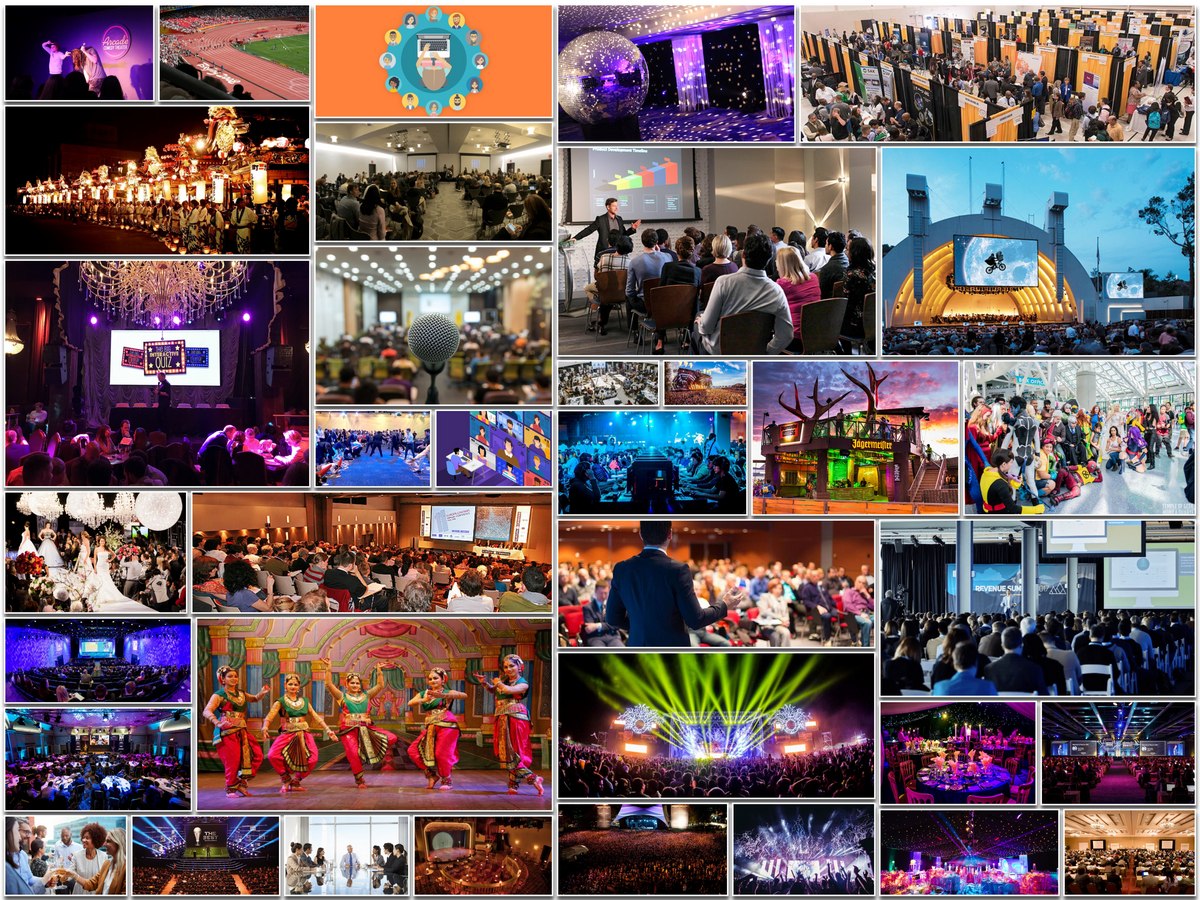
Live events have become a popular way for organizations to connect with their audience and create an immersive experience. Whether it’s a concert, a trade show, or a corporate event, live events allow attendees to connect with each other and experience something unique in real-time.
In this article, we will discuss how to plan and execute a successful live event.
Introduction:
Live events are an excellent way to bring people together, create memories, and build relationships. Planning a live event can be a challenging task, but with the right approach and preparation, it can be a rewarding experience for all involved. From choosing the right venue to selecting the right entertainment, there are many factors to consider when planning a live event.
What is the meaning of live events?
Live events refer to real-time, in-person or virtual events where audience members can participate and interact with the event in real-time.
Live events refer to real-time events that take place in a physical or virtual setting and are designed to bring together a large number of people to experience an event as it happens. This can include concerts, conferences, festivals, political rallies, and more. The key characteristic of live events is that they are experienced in real-time by a live audience, either in person or through a live streaming platform.

Live events are an effective way for organizations to connect with their audience, promote their brand, and generate awareness for their products or services. They provide opportunities for real-time interaction and engagement with the audience, and can create a sense of community and shared experiences.
In the era of technology and digital media, live events have evolved to include virtual events, which allow organizations to reach a larger and more diverse audience. These virtual events can be accessed from anywhere in the world, making them a flexible and cost-effective alternative to traditional in-person events.
What are live events?
Live events refer to events that take place in real-time, either in a physical location or virtually, and are designed to bring together a large number of people to experience an event as it happens. This can include concerts, conferences, festivals, political rallies, and more.

The key characteristic of live events is that they are experienced in real-time by a live audience, either in person or through a live streaming platform. Live events can provide opportunities for real-time interaction and engagement between the audience and the event organizers, and can create a sense of community and shared experiences.
Live events can be in-person events, where the audience physically attends the event, or virtual events, where the audience participates online through a live streaming platform. With the advancement of technology and digital media, virtual events have become more popular, as they allow organizations to reach a larger and more diverse audience and are often more cost-effective than traditional in-person events.
What are the different types of live events?
There are many different types of live events, including concerts, trade shows, corporate events, sports games, festivals, and more. The type of event you choose will depend on your audience and the experience you want to create.
There are several types of live events, including:

- Conferences: Large gatherings of professionals, experts, and thought leaders in a particular industry.
- Webinars: Online educational or training sessions that allow attendees to participate and engage in real-time.
- Meetings: Virtual or in-person gatherings of team members, stakeholders, or clients to discuss a specific topic or project.
- Concerts: Live musical performances by artists or bands, typically in front of a live audience.
- Sporting events: Live competitions or games in a variety of sports, such as football, basketball, or soccer.
- Political rallies: Gatherings of supporters of a political party or candidate, often to hear speeches or participate in discussions.
- Trade shows: Exhibitions of products and services in a particular industry, where attendees can network, learn about new products, and connect with suppliers.
- Workshops: Hands-on learning sessions in which attendees can gain practical skills and knowledge in a specific area.
These are just a few examples of the many different types of live events. The type of event you choose to host will depend on your goals, audience, and the type of content or message you want to convey.
Why are live events important?
Live events are important because they provide attendees with an immersive experience that they can’t get from simply watching something on television or reading about it online. They also provide opportunities for attendees to connect with others and build relationships.

Live events are important for several reasons:
- Building relationships: Live events provide opportunities to build personal connections and relationships with customers, clients, employees, or partners.
- Engaging with a live audience: Live events allow for real-time engagement and interaction with a live audience, providing a unique and memorable experience.
- Networking: Live events provide opportunities for attendees to network with others in their industry or field, making it easier to form partnerships and collaborations.
- Education and training: Live events provide a platform for delivering education and training sessions, allowing attendees to learn and grow in their careers.
- Promoting products and services: Live events provide an opportunity to showcase products and services to a captive audience, and generate interest and leads.
- Driving brand awareness: Live events provide a platform for promoting a brand, and raising awareness among a target audience.
- Creating community: Live events bring people together and create a sense of community and shared experiences.
Overall, live events play an important role in building relationships, engaging with a live audience, delivering education and training, promoting products and services, driving brand awareness, and creating community.
How to Arrange Live Events:

Determine Your Goals:
The first step in planning a live event is to determine your goals. What do you hope to accomplish with the event? Are you looking to increase brand awareness, generate revenue, or connect with your audience? Knowing your goals will help you make decisions about the type of event you want to plan and the type of experience you want to create.
Determining your goals is an important step in planning a live event, as it helps you to focus your efforts and resources on what matters most. Some common goals for live events include:
- Building brand awareness: Your goal may be to increase awareness of your brand among a target audience.
- Generating leads: You may want to use the live event as an opportunity to generate leads and sales for your business.
- Providing education and training: If your live event is focused on education and training, your goal may be to provide attendees with valuable skills and knowledge they can use in their careers.
- Building relationships: If you are hosting a live event to build relationships with customers, clients, or partners, your goal may be to foster deeper connections and increase engagement.
- Driving sales: If your live event is focused on promoting a product or service, your goal may be to drive sales and increase revenue.
- Creating community: If your live event is focused on creating a sense of community among attendees, your goal may be to bring people together and foster a sense of belonging.
By determining your goals, you can create a clear plan for what you want to achieve with your live event, and focus your efforts on making it a success.
Choose a Venue:
Once you have determined your goals, the next step is to choose a venue for your event. Consider the size of the venue, the location, and the type of atmosphere you want to create.
following when selecting a venue:

- Location: Consider the location of the venue and whether it is easily accessible for your target audience.
- Capacity: Make sure the venue has enough space to accommodate your expected attendance.
- Amenities: Ensure the venue has all the necessary amenities, such as seating, restrooms, catering facilities, and audio-visual equipment.
- Budget: Make sure the venue is within your budget, and consider any additional costs such as parking, setup and cleanup, and any additional equipment rental.
- Theme and style: Consider the theme and style of your event and select a venue that complements it.
- Parking: Ensure the venue has ample parking or is easily accessible via public transportation.
- Technology: Make sure the venue has the technology you need for your event, such as Wi-Fi, audio-visual equipment, and projection systems.
By carefully selecting a venue that meets your needs and budget, you can help ensure the success of your live event.
Plan the Logistics:
Plan the logistics of your event, including the schedule, transportation, and food and drinks. Make sure you have a plan in place for managing the schedule, transportation, and other logistics.
Planning the logistics is an important step in ensuring the smooth running of your live event. Consider the following when planning the logistics:
- Timing: Plan the start and end times of the event, taking into account setup and cleanup time, and any other activities you have planned.
- Transportation: Plan transportation for attendees, speakers, and VIPs, if necessary.
- Parking: Make arrangements for parking, including reserving spaces for VIPs and speakers.
- Food and beverage: Plan for food and beverage services, including catering, refreshments, and alcohol if applicable.
- Audio-visual equipment: Make arrangements for audio-visual equipment, such as sound systems, lighting, and projection systems.
- Security: Plan for security, including hiring security personnel, if necessary.
- Staffing: Plan for staffing, including hiring event staff, ushers, and volunteers, if necessary.
- Emergency planning: Make arrangements for emergency planning, including first aid, fire exits, and evacuation plans.
By carefully planning the logistics of your event, you can help ensure that it runs smoothly and efficiently, and that your attendees have a positive experience.
Choose Entertainment:
Choosing the right entertainment is an important step in planning a live event. Consider the following when selecting entertainment:
- Theme: Choose entertainment that fits the theme and style of your event.
- Budget: Make sure the entertainment fits within your budget.
- Audience: Consider the preferences of your target audience and choose entertainment that will appeal to them.
- Timing: Plan the timing of the entertainment, taking into account setup and cleanup time, and any other activities you have planned.
- Equipment: Make sure the entertainment has all the necessary equipment and that it is in good working order.
- Professionalism: Choose entertainment that is professional, reliable, and has a positive reputation.
- Interactivity: Consider adding interactive elements to engage your audience, such as live music, game shows, or other participatory activities.
By carefully selecting entertainment that meets your needs and budget, and that appeals to your target audience, you can help ensure the success of your live event.
What are the 2 steps for creating the a live broadcast event?
- Planning and preparation: Determine the purpose, goals, and target audience for the live event, and make necessary arrangements such as scheduling, setting up technical equipment, and promoting the event.
- Execution: Host the live event and engage with the audience through interaction, such as Q&A sessions or audience polls.
How do you create a live event for a team?
- Determine the purpose, goals, and target audience for the live event.
- Schedule the event and send invitations to the team members and any relevant stakeholders.
- Set up technical equipment, including a camera, microphone, and a device to broadcast the event.
- Promote the event to your team and encourage participation.
- During the event, engage with the team by using interactive features such as Q&A sessions, polls, and live chats.
- After the event, evaluate the success and gather feedback to inform future events.
Note: If using Microsoft Teams, you can create a Teams live event which provides a platform for hosting live, interactive events with real-time video and audio.
How do you do a live meeting?
- Determine the purpose, goals, and agenda for the meeting.
- Schedule the meeting and send invitations to participants.
- Choose a platform for the live meeting, such as Zoom, Microsoft Teams, or Google Meet.
- Set up your device and technical equipment, including a camera, microphone, and internet connection.
- Promote the meeting and ensure that all participants have the necessary information to join the meeting.
- During the meeting, engage with participants by using interactive features such as Q&A sessions, polls, and live chats.
- After the meeting, share any follow-up materials and gather feedback to inform future meetings.
Note: Ensure that the platform you choose is secure and complies with any privacy or security regulations for your industry or organization.
What are the requirements for Teams live events?
- Microsoft Teams account: To create and host a Teams live event, you need to have a Microsoft Teams account.
- Device: A device with a camera and microphone is required to participate in and host the live event.
- Internet connection: A reliable and fast internet connection is necessary for a smooth live event experience.
- Technical equipment: If hosting a professional event, you may need additional technical equipment such as a high-quality camera, lighting, and audio equipment.
- Permission: You may need to have the necessary permissions to host a Teams live event, depending on the policies of your organization.
Note: It is recommended to test your setup and equipment before the live event to ensure a smooth and successful experience.
What makes a successful live stream?
A successful live stream has clear goals, engaged and interactive audience, quality production values, and technical reliability.
A successful live stream can be achieved by considering the following factors:
- Content: Offer engaging and relevant content that is aligned with your audience’s interests and expectations.
- Technical setup: Ensure that the equipment, lighting, and internet connection are of high quality to prevent technical issues during the stream.
- Interactivity: Encourage interaction with your audience through questions, polls, and other interactive features.
- Consistency: Stream regularly at a set schedule to build an audience and maintain their engagement.
- Promotion: Advertise your live stream on your social media platforms, website, and other relevant channels to reach a wider audience.
- Professionalism: Present yourself in a professional manner and make sure the content is appropriate for the audience.
- Engagement: Respond to comments and questions in real-time to create a two-way communication and foster a sense of community.
- Post-live wrap-up: Share highlights and recap the live stream for those who missed it, and use the footage for future promotions.
By incorporating these elements, you can create a successful live stream that engages and informs your audience.
successful live stream has several key elements:
- Clear goals: Having a clear purpose and goals for the live stream helps to ensure that the content is relevant and engaging for the audience.
- Engaged audience: Interacting with the audience during the live stream can help to keep them engaged and interested in the content.
- Quality production values: A well-produced live stream, with good audio and video quality, can help to create a professional and engaging experience for the audience.
- Technical reliability: Having reliable and robust technical equipment and internet connection is crucial for a successful live stream, as any technical issues can negatively impact the audience experience.
- Interactivity: Including interactive elements such as Q&A sessions, polls, or live chats can help to engage the audience and create a dynamic experience.
- Promotion: Promoting the live stream through various channels, such as social media, email, and website, can help to reach a wider audience and increase participation.
Note: Continuously evaluating the success of the live stream and gathering feedback from the audience can help to inform future live streams and improve the overall experience for the audience.
What are examples of live events?
- Concerts
- Conferences and trade shows
- Political rallies
- Sporting events
- Religious ceremonies
- Fundraisers and charity events
- Cultural festivals
- Graduation ceremonies
- Cooking and culinary events
- Theater performances and plays
- Gaming events
- Workshops and training sessions
- Book signings and author events
- Art exhibitions and gallery openings
Note: With the rise of technology and social media, live events have also expanded to include online events such as webinars, virtual conferences, and live-streamed broadcasts.
How do I create a live event at work?
To create a live event at work, follow these steps:
- Determine the purpose, goals, and target audience for the live event.
- Schedule the event and send invitations to relevant stakeholders, such as employees, customers, and partners.
- Choose a platform for the live event, such as Microsoft Teams, Zoom, or Google Meet.
- Set up technical equipment, including a camera, microphone, and a device to broadcast the event.
- Promote the event internally, through channels such as email, intranet, or social media.
- During the event, engage with the audience by using interactive features such as Q&A sessions, polls, and live chats.
- After the event, evaluate the success and gather feedback to inform future events.
Note: Ensure that the platform you choose complies with any privacy and security regulations for your industry or organization. Also, consider any necessary technical support or training for employees to ensure a successful live event.
How do you ask questions in teams live event?
To ask questions in a Teams live event, audience members can use the Q&A feature within the Teams platform or participate in a live chat.
During a live event in Microsoft Teams, you can ask questions in a few ways:
- Chat: Participants can ask questions in the chat box and the presenter or host can respond to them in real-time.
- Q&A: Teams have a built-in Q&A feature where participants can submit questions anonymously, and the presenter or host can answer them in front of the audience.
- Polls: Teams also have a poll feature where the presenter or host can ask multiple-choice questions and the audience can vote in real-time.
- Raise hand: Participants can raise their hand virtually during the live event to signal they have a question.
In Microsoft Teams live events, there are several ways to ask questions:
- Q&A session: You can enable a Q&A session where attendees can submit their questions in real-time. The host or presenter can then answer the questions during the live event.
- Chat: Attendees can use the chat feature to ask questions during the live event. The host or presenter can then answer the questions in real-time or after the event.
- Polls: You can use the poll feature to ask questions and gather feedback from attendees during the live event.
- Raise hand: Attendees can use the raise hand feature to signal to the host that they have a question. The host can then address their question during the live event.
Note: Ensure that the platform you choose has the necessary features to allow for audience interaction and question-asking during the live event. Also, consider any necessary moderation or filtering to ensure an orderly and productive Q&A session.
What are teams live events?
Microsoft Teams Live Events are real-time, interactive online events that allow organizations to connect and engage with a large audience in a virtual setting. They are designed for webinars, town hall meetings, virtual conferences, and other events where real-time interaction and communication with a large audience is needed.
Teams Live Events allow the host to present content, such as slides and videos, while engaging with the audience through features such as Q&A, chat, and polls. They can be accessed by anyone with a Teams account and an internet connection, making it easy for organizations to reach a wide audience.
Live Events in Teams offer a number of benefits, including the ability to reach a larger audience, cost savings compared to in-person events, and the ability to gather real-time feedback from participants. They are a flexible and effective way for organizations to communicate and collaborate with their audience in real-time.
With Teams Live Events, you can:
- Host meetings with up to 10,000 attendees.
- Stream video and audio content to attendees.
- Share screen content, such as presentations, videos, or documents.
- Interact with attendees through features such as Q&A sessions, polls, and live chats.
- Record the live event for later viewing.
Teams Live Events are a useful tool for organizations and businesses to conduct virtual meetings, trainings, and presentations with remote teams, partners, and customers. The platform is easy to use and provides a high-quality and reliable virtual event experience.
How do you engage a live audience?
To engage a live audience, use interactive elements such as Q&A sessions, polls, and live chats, and encourage audience participation.
Engaging a live audience is an important aspect of hosting a successful live event. Here are some tips for engaging your live audience:
- Encourage interaction: Use interactive features such as Q&A sessions, polls, and live chats to encourage attendees to participate in the live event.
- Make it personal: Address attendees by name, and use humor and personal anecdotes to connect with them.
- Keep it interactive: Offer opportunities for attendees to provide feedback or ask questions, and incorporate that feedback into the live event.
- Offer value: Provide valuable content or insights during the live event to keep attendees engaged and interested.
- Use multimedia: Use a combination of video, audio, and images to keep the live event visually engaging.
- Make it interactive: Offer attendees opportunities to participate in the live event through hands-on activities, such as quizzes, games, or interactive presentations.
- Encourage participation: Encourage attendees to share their thoughts and opinions by asking questions or leading a discussion.
Note: Ensure that the platform you use for the live event has the necessary features to support audience engagement and interaction. Also, be aware of technical limitations or difficulties that may affect the audience’s ability to participate in the live event.
How do you invite people to live?
To invite people to a live event, share the event details and a link to join the event through various communication channels such as email, social media, or a website.
You can invite people to a live event in a few ways:
- Email Invitation: Compose an email to the intended attendees, including details of the event, date, time, and a link to join the live event.
- Social media: Share the event details on your social media platforms such as Facebook, Twitter, or LinkedIn to reach a wider audience.
- Event page: Create an event page with the details of the event and a link to join the live event. This can be on your website or a platform like Eventbrite.
- Calendar Invite: Send a calendar invite to the intended attendees with the event details and a link to join the live event.
- Direct Invitation: Directly reach out to individuals and invite them to the live event.
- Advertising: Advertise the event on relevant websites, forums, or other channels to reach the target audience.
Whichever method you choose, be sure to provide clear instructions on how to join the live event, and include a call-to-action to encourage attendance.
Advantages:
Immersive Experience:
Live events provide attendees with a unique and immersive experience that they can’t get from simply watching something on television or reading about it online.
Networking Opportunities:
Live events provide attendees with opportunities to connect with others and build relationships.
Increased Awareness:
Live events can help increase awareness of your brand or organization by bringing people together and creating a sense of community.
Increased Revenue:
Live events can generate revenue for your organization through ticket sales, sponsorships, and other sources.
Disadvantages:
Cost:
Live events can be expensive to plan and execute, especially if you are renting a venue, hiring entertainment, or providing food and drinks for attendees.
Logistics:
There are many logistics involved in planning and executing a live event, from choosing the right venue to managing the schedule and transportation.
Risk of Failure:
There is always the risk that a live event will not go as planned, and this can result in disappointment for attendees and a loss of revenue for your organization.




